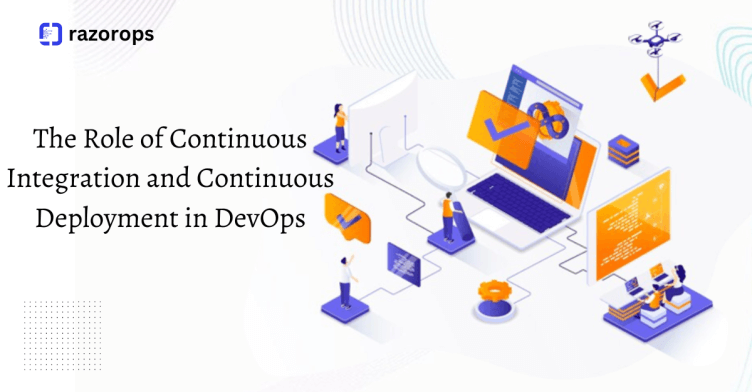
The Role of Continuous Integration and Continuous Deployment (CI/CD) in DevOps
Software development, efficiency, speed, and reliability are paramount. Traditional software development methodologies often struggled to keep pace with the demands of modern applications and the need for rapid updates. This is where DevOps, a set of practices that combine development (Dev) and operations (Ops), comes into play. At the heart of DevOps lies Continuous Integration and Continuous Deployment (CI/CD), two indispensable practices that have revolutionized the way software is developed, tested, and delivered.
Understanding CI/CD
Continuous Integration (CI) and Continuous Deployment (CD) are complementary practices, each serving a crucial role in the DevOps pipeline.
Continuous Integration (CI):
CI is the practice of frequently and automatically integrating code changes into a shared repository. Developers commit their code changes to this repository multiple times a day. Automated build and testing processes are triggered as soon as these changes are detected. CI ensures that the newly added code integrates smoothly with the existing codebase, detecting and resolving conflicts early in the development process. This results in reduced integration issues and faster development cycles.
Continuous Deployment (CD):
CD takes the concept of CI one step further. Once code changes pass through the CI process, CD automates the deployment of these changes to production or staging environments. In other words, it allows for the continuous and automated release of software updates to end-users. This practice minimizes manual intervention and reduces the risk of human errors in the deployment process.
The Benefits of CI/CD in DevOps
1. Speed and Efficiency:
One of the primary advantages of CI/CD is the acceleration of the software development lifecycle. Automated testing and deployment mean that developers can release new features and bug fixes much faster. This speed is critical in today’s competitive market where rapid innovation is a key differentiator.
2. Quality Assurance:
CI/CD enforces rigorous testing and quality control. Automated tests run with every code commit, ensuring that issues are caught early in development. This leads to higher-quality software with fewer bugs, reducing the need for costly and time-consuming manual testing.
3. Risk Reduction:
By automating the deployment process, CD minimizes the potential for human errors during releases. Furthermore, if an issue arises in production, CD allows for quick rollbacks to the previous version, reducing downtime and user impact.
4. Collaboration:
CI/CD encourages collaboration among development and operations teams. It promotes a culture of shared responsibility, where everyone works together to deliver and maintain high-quality software.
5. Scalability:
CI/CD practices are highly scalable, making them suitable for both small startups and large enterprises. As your software grows, CI/CD can adapt to handle the increased complexity and volume of changes.
Implementing CI/CD in Your DevOps Workflow
To implement CI/CD effectively in your DevOps workflow, consider the following steps:
Version Control: Use a version control system like Git to manage your codebase.
Automated Builds: Set up automated build processes to compile your code and create artifacts.
Automated Testing: Develop a comprehensive suite of automated tests, including unit tests, integration tests, and end-to-end tests.
Deployment Automation: Automate the deployment process to staging and production environments, ensuring consistency and reliability.
Monitoring and Feedback: Implement continuous monitoring of your application in production to detect issues and gather feedback for further improvements.
Iterate and Improve: Continuously refine your CI/CD pipeline based on feedback and changing requirements.
Continuous Integration and Continuous Deployment are integral components of DevOps that empower development teams to deliver software faster, with higher quality, and reduced risk. Embracing these practices can lead to more efficient development processes and better outcomes for both development teams and end-users.
Tutorials & Guides
DevOps: A Software Architect’s Perspective
Top Reading Recommendations
Upcoming Events
The devops challenge when scaling your production and company
Oct 12, 12:30PM (PST) Oct 13 , 12:30 PM (PST)
Fridays Virtual Meetup (Acing the CKA Exam Book, US timezone)
Oct 13, 10:30 –11:30 PM (PST)
DevOps Jobs
Google - Check out all the jobs
here
Accenture -Check out all the jobs here
Infosys -Check out all the jobs here
Microsoft -Check out all the jobs
here

PS- We publish this newsletters every week, Subscribe and share with your friends. We hope this newsletter has provided valuable information. Follow RazorOps Linkedin Page Razorops, Inc.





